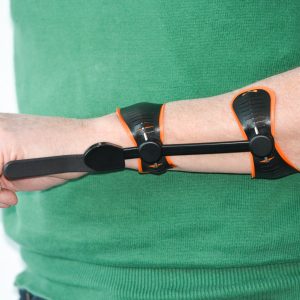Wondering why you keep dropping things? It might have something to do with wrist weakness.
Have you ever experienced that frustrating moment when you’re holding something in your hand, only to suddenly lose your grip and watch it slip away? Whether it’s a pen, a cup, or your phone, the continuous dropping of things can be frustrating. But have you ever considered that this seemingly mundane issue could be connected to the strength and function of your wrists? In this blog post, we’ll explore the intriguing connection between dropping things and wrist weakness.
Dropping things? Might be because of your Wrist Muscles…
Our wrists play a vital role in our everyday lives. They’re involved in a multitude of tasks, from typing on a keyboard and preparing meals to writing, driving, and more. The intricate web of muscles and tendons within our wrists allows us to move and control our hand and finger movements with precision. However, when these muscles become weakened or compromised, even the simplest actions like gripping an object can become challenging.
The Science Behind Dropping Things
Dropping objects unexpectedly can often be attributed to wrist weakness. Here’s how it happens:
- Lack of Muscle Support: When the muscles responsible for controlling wrist movement are weakened, they struggle to maintain a firm grip on objects. As a result, you may find yourself unable to hold onto items securely, leading to accidental drops.
- Inefficient Fine Motor Control: The fine motor control required to hold onto small or delicate objects is directly linked to the strength and coordination of the wrist muscles. Weakness in these muscles can lead to shaky or unsteady hands, increasing the likelihood of dropping things.
- Limited Range of Motion: Wrist weakness can also impact your ability to extend your wrist and fingers fully. This limited range of motion can affect your ability to grasp objects effectively, resulting in accidental drops.
The Impact on Daily Life
The effects of wrist weakness and dropping things can extend beyond mere inconvenience. Individuals with compromised wrist strength may encounter difficulties in performing routine activities such as writing, cooking, scrolling on a touchscreen or even brushing hair and fastening buttons.
Seeking Solutions for Wrist Weakness
If you find yourself consistently dropping things or experiencing difficulty with everyday tasks, it’s essential to address the underlying issue of wrist weakness. Here are a few steps to consider:
- Consult a Healthcare Professional: If you suspect wrist weakness is the cause of your dropping incidents, seek guidance from a medical professional. They can perform a thorough assessment and recommend appropriate interventions.
- Physical Therapy: A skilled physical therapist can design exercises to strengthen your wrist muscles and improve overall hand function. There are also resources available for at-home exercises.
- Orthotic Devices: Customized wrist splints or braces can provide support to weakened muscles and help you maintain proper hand positioning.
- Lifestyle Adjustments: Practicing ergonomic techniques, using adaptive tools, and making modifications to your daily activities can help reduce strain on your wrists.
Embracing a Stronger Future
Understanding the connection between dropping things and wrist weakness sheds light on the importance of maintaining optimal wrist muscle strength. By addressing wrist weakness through targeted interventions, you can not only prevent the frustration of dropped items but also regain control and confidence in your daily activities. At Amber, we won’t let the wrist weakness hold you back – let’s embrace a stronger future together and ensure that your grip remains firm on life’s opportunities!
Disclaimer: This blog post is for informational purposes only and should not be considered as medical advice. If you are experiencing issues with wrist weakness, please consult a qualified healthcare professional for accurate diagnosis and treatment recommendations.
Recommended Products:
-
Amber Orthotics
Amber Wrist Brace
€ 380,00 Select options This product has multiple variants. The options may be chosen on the product page




